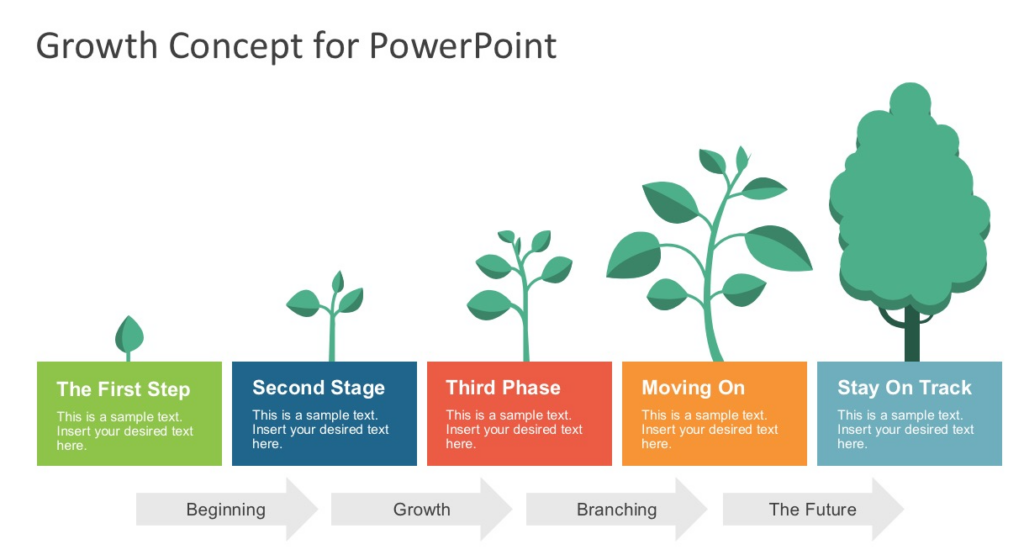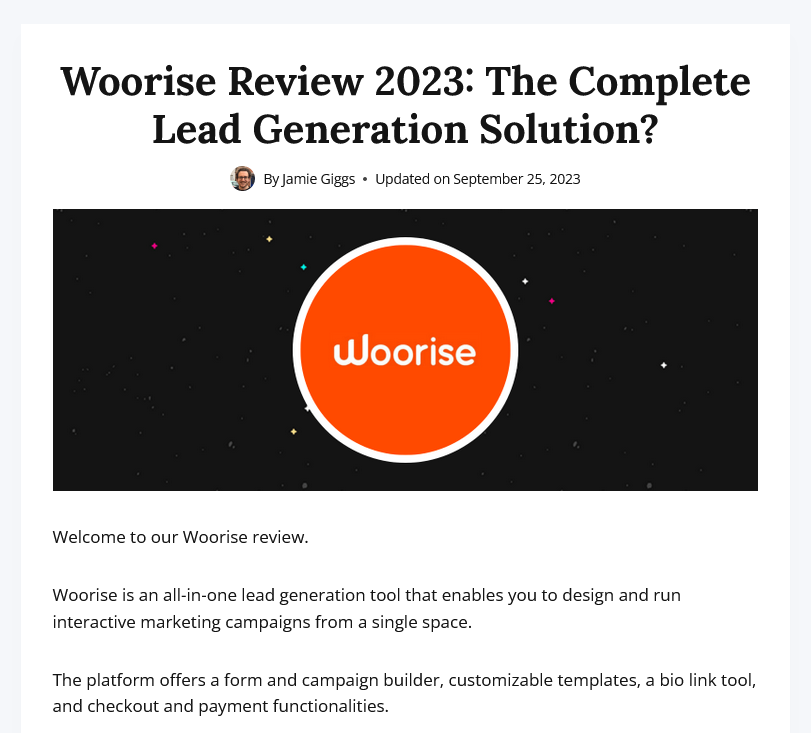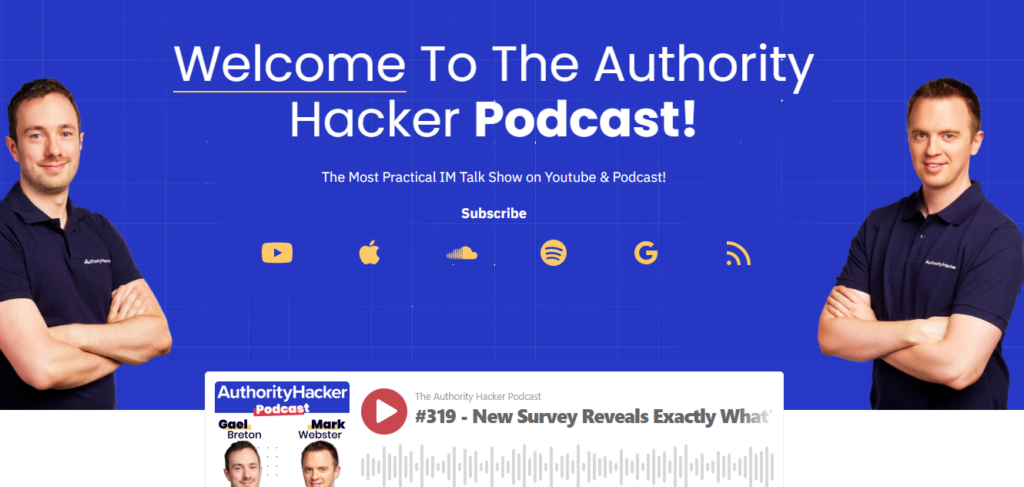Are you struggling to generate more traffic to your blog?
Creating content and strategically placing it on the right channels can help you draw in more readers. However, it’s important to know what types of blog posts will be most engaging for your audience.
Here are twelve article ideas you can use along with tips for creating them.
In this article
1. How-to Guides
How-to guides are a great way to provide readers with helpful information. Whether it’s how to fix or build something, this type of blog post can be useful to your readers.
To create an effective how-to guide, make sure you include step-by-step instructions on what needs to be done, as well as visual aids and illustrations where needed.
Remember to add questions and answers, which will help readers find the information they are looking for.
After all, writing helpful content is what your site needs to deliver in order to be competitive in the SERPs. And with tutorials, you can teach your audiences something new while also entertaining them and delivering value.
Pro Tip. Try explaining something based on personal experience or anecdote (with photos taken by yourself), which could be more genuine and will make the post more interesting.
Here’s an example of a how-to guide:

In this article, the author explains how to be compliant with GDPR, using a step-by-step approach, with practical tips and useful screenshots and visuals.
2. Listicles
Listicles (also known as list posts) are a popular way to engage visitors and make sure your content is easy to consume. These types of articles include a list of items or points that can be quickly scanned and read by the user.
To make sure your listicle stands out, try to come up with an interesting title, and add visuals such as images or infographics where appropriate.
Also, ensure you provide enough detail for each item on the list. This way, people should be able to get a good understanding of the topic without having to click away from your article.
Pro Tip. Experiment with writing the content based on different angles, such as “best”, “for beginners”, or “tried and tested” (something that will hook and entice readers).
Here’s an example of a listicle:

In this article, people can quickly find the best affiliates programs with recurring commission (which can save them tons of time researching online). It is also written in a way that it’s easy to scan, with visuals and detailed explanations for each item on the list.
3. Interviews
They can be a great way to bring in more traffic and build stronger relationships with other people in your industry.
This type of article gives you an opportunity to connect with professionals, thought leaders, or customers, and provide readers with insights into their backgrounds and experiences.
When creating interviews, it’s important to have a plan in place beforehand. Research the interviewee, come up with a list of questions that you want to ask, and also consider the best way to format the interview.
Pro Tip. You can also use these types of articles as guest posts for other sites, which will help you reach a wider audience.
Here’s an example:

In this post, Aleksandra Panyukhina, Head of Event Marketing at SEMrush, reveals how to perfectly integrate digital and in-person experiences. The interview follows a Q&A format, providing readers with an inside look at how to combine digital experiences and physical events.
4. Case Studies
Among all the types of blog posts, these are great for sharing success stories that demonstrate the value of your product or service. They can help you stand out from the competition as well as attract more customers in the process.
When creating case studies, make sure you provide a detailed overview of the solution and how it works. Show real-life examples to illustrate the benefits that other customers have seen with your product or service.
You can also include visuals such as screenshots, videos, or infographics to showcase the results.
Pro Tip. Consider adding a “lessons learned” or “takeaways” section at the end of your article, which should summarize the main points and help readers quickly understand the value that was provided.
Here’s an example:

In this case study, Upthrust’s State of Growth report addresses 2023 growth marketing trends. The post is divided into sections, with videos and data to illustrate the results. In the end, readers can find all of the key takeaways.
5. Presentations
While written content remains an essential medium for conveying information, presentations have emerged as an effective tool for engaging and educating an audience. They simplify complex ideas, showcase visuals that support your content, and present your material in a structured, easy-to-follow manner.
To craft a successful presentation on your blog, consider the following tips.
- Engage with Visuals. Use high-quality images and graphics to explain or support your points. A visual representation can often communicate what words cannot.
- Consistency is Key. Ensure that your slides have a consistent design theme, font, and color scheme. This not only looks professional but also ensures readability and clarity for your audience.
- Minimize Text. Avoid overcrowding your slides with text. Use bullet points, concise sentences, and relevant visuals to convey your message effectively.
- Leverage Templates. If you’re not a design expert, don’t worry. There are great platforms where you can find professional presentation templates. These templates can give your presentation a polished look and feel, saving you both time and effort.
Pro Tip: Always seek feedback on your presentation before publishing or presenting. A fresh pair of eyes can help catch any overlooked errors or offer suggestions for improvement.
Here is an example:

6. Infographics
Infographics are an effective way to make your content more visually engaging and attractive. They also help you break down complex topics into simpler points that are easier for people to understand and remember.
When creating infographics, make sure you have a clear structure in mind, and also ensure that the graphics are easy to follow. Don’t forget to include your contact information at the end of the infographic so people can easily find out more about you.
Pro Tip. Try adding some fun facts or data visualizations in order to capture readers’ attention. Tools like Canva or Visme can help you create high-quality infographics with ease.
Here’s an example:

This infographic explains how to optimize content for SEO, adding data visualizations, key points, and clear instructions. It’s also designed with a bright color palette that makes it stand out.
7. Newsjacking
It’s the art of leveraging current events and news stories in order to gain more visibility. This type of blog post allows you to stay relevant and timely, while also providing readers with valuable insights into your industry.
When creating this kind of content, make sure you explain how the topic or story relates to your business, while also offering your unique perspective.
Pro Tip. To ensure you don’t miss any stories, create an RSS feed of industry-related websites and blogs. You can also use monitoring tools like Google Alerts to get notified when new content goes live.
Here’s an example:

In this post, SEJ writes about a timeline of events that led to Elon Musk’s takeover of Twitter. and how he was able to leverage current events to gain more attention and establish himself as a thought leader in the tech industry.
8. Original Research
Original research articles provide readers with in-depth insights that can’t be found anywhere else. These pieces of content are great for building authority, as they demonstrate to readers that you have extensive knowledge of the topic and can provide valuable information.
When creating these types of blog posts, make sure you clearly explain the methodology and results of your study. Include visuals such as charts and graphs to help readers understand the data.
Pro Tip. You should also back up your results with relevant sources in order to make them more credible. Tools like Google Scholar can help you find the most authoritative research papers in your field.
Here’s an example:

In this research, Backlinko analyzed almost 12 million Google search results to determine what factors influence search engine rankings. The report includes detailed visuals, sources, and an in-depth explanation of the methodology used.
9. Reviews
Reviews are a great way to attract more customers as they provide an unbiased assessment of a product or service.
When writing reviews, make sure you provide an honest and detailed overview of the product or service.
Include points such as design, features, pricing, customer support, and more.
Pro Tip. Try to add screenshots and videos to back up the points you make, and provide information from both your perspective as well as other customers.
Here’s an example:

This review article explains the features, pricing and other points for Woorise lead generation platform. It also includes step by step screenshots of the dashboard to illustrate how the platform works.
10. Checklist
Checklists are extremely useful for people who need help keeping track of tasks and planning ahead. This type of post can also help you answer Frequently Asked Questions and provide the necessary information in an easy-to-follow format.
When creating checklists, make sure you include as many points as possible without overwhelming your readers. Try to group the items into categories and provide descriptions to clarify the points.
Pro Tip. If possible, include visuals such as screenshots or videos to demonstrate how the steps should be followed in order to complete the task. And follow a chronological order to make the checklist easier to understand.
Here’s an example:

In this case, Ahrefs built an SEO checklist that takes readers through the steps of optimizing their content for search engines, from creating a keyword list to monitoring rankings. The article is divided into sections and includes visuals and descriptions for each step (with a template too).
11. Podcasts
Podcasts are a popular medium for consuming content and can attract a wide audience. They allow you to provide valuable information in an audio format, making it easier for people to listen and learn on the go.
When creating podcasts, make sure you have a clear structure in mind and that the audio quality is good. Consider inviting guests or experts to discuss topics related to your industry and add a personal touch to the conversation.
Pro Tip. Don’t forget to promote your podcast on social media and other platforms, as well as include it in your blog posts. And make sure to transcribe each episode so that people can also read the content if they prefer.
Here’s an example:

In this podcast, Authority Hacker’s team discusses various topics related to online marketing, from SEO and content creation to affiliate marketing and more. Each episode features experts in the field, offering valuable insights and advice for listeners.
12. Video Blogs
Video blogs (or vlogs) can help you engage with viewers and provide valuable information in an entertaining format. Vlogs can also give you the opportunity to show your personality, allowing viewers to connect with you on a more personal level.
Remember to provide detailed information about the topic as well as tips and advice.
Pro Tip. Try to keep the videos concise, as viewers have a short attention span. And include visuals such as screenshots or animations to make the video more interesting and engaging.
Here’s an example:

In this post, Lisa of Inspiretothrive includes a video where she explains how to build an online presence for your business through social media.
Wrapping Up
Creating the right type of content can help you get more traffic to your blog.
From original research to newsjacking, there are plenty of options to choose from.
Pick the types that best match your target audience and purpose, and use the tips provided in this article to make sure you create high-quality content every time.



